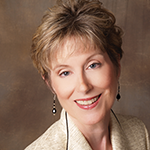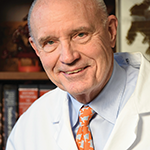Dr. Pillinger agrees that Bellevue, the oldest U.S. public hospital [established in 1736], where the underserved make up 80% of the patient population, is “really quite special.” Trainees rotate through Bellevue monthly, encountering patients from over 50 different countries of origin, where treatment is available to everyone—from an Ebola patient arriving at Kennedy Airport to a cab driver needing a quadruple bypass.
Dr. Weissmann says that Bellevue Hospital, what he calls “one of the treasures of American medicine,” has contributed to the uniqueness of the Division.
Research Opportunities Abound
“At NYU Langone, we have an incredible opportunity to take on research,” says Dr. Scher. Thirteen years ago, he arrived as a trainee in the division, originally focused on rheumatic diseases. Success with biologics in both rheumatic conditions and psoriatic disease piqued his interest, especially the fact that patients with psoriatic disease responded specifically to IL-17 and IL-23 blockade. Dr. Scher was interested in other immunological approaches to this often understudied disease, and was encouraged by his mentor, Dr. Abramson, to build on his expertise with the microbiome. Dr. Scher now heads the medical center’s Psoriatic Arthritis Center. The collaborative explorations, in which dermatologists as well as rheumatologists, pathologists and others, seek further microbial targets to intercept disease processes, are funded in part by NIH and philanthropic grants such as those from the Riley Family Foundation and the Beatrice Snyder Foundation.
Legacy of Scientific Inquiry
“What I try to instill in my fellows and my patients is that we need to be able to truly understand disease processes before we even prescribe any medication. That has been the legacy of many others before me,” says Dr. Scher.
That legacy can be traced to 1932 when the dean of the NYU School of Medicine, O. Currier McEwen, MD, founded the RDSG. Dr. McEwen and Joseph Bunim, MD, who later became director of the NIH clinical center, were responsible for seminal work on cortisone and rheumatic fever. Dr. Weissmann’s father, a rheumatologist at Mt. Sinai, took his son to a talk by Drs. McEwan and Bunim in 1950. Thus, “It was cortisone that brought me to rheumatology,” Dr. Weissmann notes.
After 36 years, Edward Franklin, MD, succeeded Dr. McEwen as director of the RDSG. The noted NYU cell biologist and essayist Lewis Thomas, then dean of the School of Medicine, appointed Dr. Weissmann as director of a novel Division of Cell Biology in 1963, and in 1973 Saul Farber appointed him head of the newly reorganized Division of Rheumatology in the Department of Medicine.


